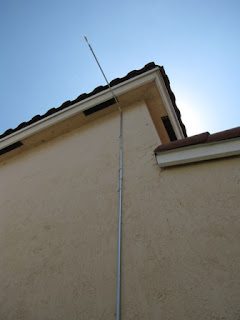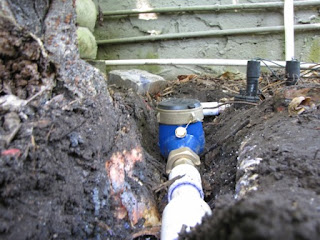
Isaya presenting at extension. Always an excellent substitute - and good speaker!

Kaileigh downloading data at Snapper Creek. Kaileigh was part of the NSF REU last summer and will graduate from Purdue in 2012.

Tina and the mosquitoes at C111 - don't worry she gets the data no matter what!

Teresa and I helping Isaya in C111. I miss my Brazilian friend!

And, let's not forget the water quality conference! Aime saved my life this year.

And, a big thanks to Mike who helps make us look good on the web and in film! Not to mention collect great research data!
Looking forward to an even better 2012!














 Outfitted with a classic mechanical/digital hybrid timer when initially assessed, with high-volume spray heads watering both turf and hedges, it also acted upon our recommendations to improve efficiency and reduce water-use.
Outfitted with a classic mechanical/digital hybrid timer when initially assessed, with high-volume spray heads watering both turf and hedges, it also acted upon our recommendations to improve efficiency and reduce water-use. 






 View the video
View the video 



 The valve finder is a two-piece apparatus. One part connects to a ground and the zone wire of the valve one is trying to locate; the second part is a wand with headphones that tracks power in the valve wire and emits a noise which grows louder as the valve location gets closer.
The valve finder is a two-piece apparatus. One part connects to a ground and the zone wire of the valve one is trying to locate; the second part is a wand with headphones that tracks power in the valve wire and emits a noise which grows louder as the valve location gets closer. The equipment worked like a charm for us and once both valves were located the water meter installation began.
The equipment worked like a charm for us and once both valves were located the water meter installation began.








 By August we were working on retrofitting the irrigation system for research. Our first visit was limited to exchanging the existing digital timer for the weather-based timer and installing the weather station.
By August we were working on retrofitting the irrigation system for research. Our first visit was limited to exchanging the existing digital timer for the weather-based timer and installing the weather station. 







 We added the water meter on the system mainline to track water-use. We also did some redesign work to improve the application rate on several of the five zones.
We added the water meter on the system mainline to track water-use. We also did some redesign work to improve the application rate on several of the five zones.


